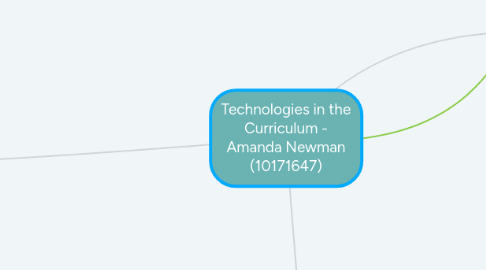
1. SCSA Western Australian Curriculum
1.1. Year Levels: K-10
1.2. Learning Area
1.2.1. Design Technologies
1.2.1.1. Strands
1.2.1.1.1. Knowledge and Understanding
1.2.1.1.2. Processes and Production
1.2.2. Digital Technologies
1.2.2.1. Strands
1.2.2.1.1. Knowledge and Understanding
1.2.2.1.2. Processes and Production
1.3. General Capabilities
1.3.1. Literacy
1.3.2. Numeracy
1.3.3. ICT
1.3.3.1. Aims for students to access, create and communicate USING ICT
1.3.3.2. Students develop knowledge and skills around the USE of ICT
1.3.3.2.1. Safe use of ICT
1.3.3.3. Supports and enhances learning across the curriculum. Use technology as a tool for learning
1.3.4. Ethical Understanding
1.3.5. Intercultural understanding
1.3.6. Personal and social capability
1.3.7. Critical and creative thinking
1.4. Cross-Curriculum Capabilities
1.4.1. Asia and Australia's engagement with Asia
1.4.2. Sustainability
1.4.3. Aboriginal and Torres Strait Islander Histories and Culture
2. ACARA National Curriculum
2.1. Year levels: F-2, 3-4, 5-6, 7-8 & 9-10
2.2. Learning Area
2.2.1. Design Technologies
2.2.1.1. Aims: - Develop confidence as users and designers of technology - Investigate, generate and critique designs - Use systems thinking to generate ideas and communicate solutions to audiences - Select and manipulate a range of tools and materials to produce design solutions - Evaluate processes and apply learning to other situations - Understand the role and responsibilities of technology designers in the community
2.2.1.2. Strands
2.2.1.2.1. Processes and Production Skills
2.2.2. Digital Technologies
2.2.2.1. Strands
2.2.2.1.1. Knowledge and understanding
2.2.2.1.2. Processes and Production Skills
2.2.2.2. Aims: - Design, create and evaluate sustainable solutions to meet current and future needs - Use computational thinking to create digital technologies - Use digital systems to automate data transfer and communicate ideas - Conduct safe, ethical and respectful communications - Apply systems thinking to analyse and monitor information systems and the effect of these in the community
2.2.3. Overarching Idea: Creating preferred futures
2.2.3.1. Thinking in Technologies: 1. Systems Thinking 2. Design Thinking 3. Computational Thinking
2.3. General Capabilities
2.3.1. Literacy
2.3.2. Numeracy
2.3.3. ICT Capability
2.3.4. Intercultural Understanding
2.3.5. Ethical Understanding
2.3.6. Personal and Social Capability
2.3.7. Critical and Creative Thinking
2.4. Cross Curriculum Priorities
2.4.1. Sustainability
2.4.2. Asia and Australia's Engagement with Asia
2.4.3. Aboriginal and Torres Strait Islander Histories and Culture
3. Student Diversity
3.1. Students with special needs
3.1.1. Curriculum adjustments are necessary to provide equitable opportunities for students to access age-equivalent content
3.2. Students who have English as a second language
3.2.1. Students who have had no formal schooling will need additional time and support in order to acquire skills for effective learning in formal settings
3.3. Talented or gifted students
3.3.1. Teachers can also accelerate student learning by drawing on content from later years levels in the WA curriculum: technologies and/or from local, state and territory teaching and learning materials.
